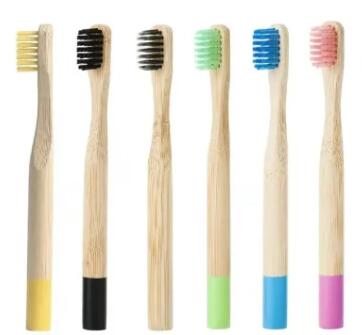What is plaque, and how does it affect oral health
2023-10-27
Plaque is a soft, sticky, colorless film of bacteria that constantly forms on the teeth and along the gumline. It is a natural occurrence in the mouth and develops as a result of the interaction between bacteria, saliva, and the foods we consume. Plaque is a common issue in oral health, and if not effectively removed through proper oral hygiene practices, it can have a significant impact on oral health in several ways:
1. Cavity Formation: Plaque bacteria feed on sugars and starches from the foods we eat. When they consume these carbohydrates, they produce acid as a byproduct. This acid can erode tooth enamel and lead to the formation of dental cavities (caries or tooth decay).
2. Gum Inflammation: Plaque left along the gumline can irritate the gums, leading to gum inflammation known as gingivitis. Gingivitis is the earliest stage of gum disease and is characterized by redness, swelling, and bleeding of the gums.
3. Periodontal Disease: If plaque is not removed and gingivitis is left untreated, it can progress to a more severe form of gum disease called periodontitis. Periodontitis can lead to the destruction of the supporting structures of the teeth, including bone loss. This can ultimately result in tooth mobility and tooth loss.
4. Bad Breath: Plaque is a source of bacteria that produce foul-smelling compounds. Accumulated plaque can lead to bad breath (halitosis), which can be socially embarrassing.
5. Tooth Sensitivity: Plaque buildup can contribute to tooth sensitivity. Acid-producing bacteria in plaque can erode tooth enamel, exposing the dentin underneath, leading to increased sensitivity to hot, cold, sweet, or acidic foods.
6. Tartar (Calculus) Formation: If plaque is not removed through regular brushing and flossing, it can harden into tartar (also known as calculus). Tartar cannot be removed by home oral hygiene methods and requires professional dental cleaning.
7. Oral Infections: Plaque can lead to oral infections, such as dental abscesses, which are painful collections of pus that may require dental treatment.
8. Gum Recession: Over time, untreated gum inflammation caused by plaque can lead to gum recession, where the gums pull away from the teeth. This can expose the tooth roots, making them more susceptible to decay and sensitivity.
9. Cavities Between Teeth: Plaque can accumulate between the teeth, leading to cavities (interproximal cavities) that are not always easily visible but can cause discomfort and require dental treatment.
10. Stain and Discoloration: Plaque can attract and hold pigments from foods and beverages, leading to the discoloration and staining of teeth.
It's crucial to remove plaque regularly through proper oral hygiene practices. This includes brushing teeth at least twice a day with a fluoride toothpaste, flossing daily to clean between the teeth, and using an antimicrobial mouthwash as recommended by your dentist. Regular dental check-ups and professional cleanings are also essential to remove any tartar buildup and assess your oral health. By effectively controlling plaque, you can prevent many of the oral health issues associated with its accumulation.



